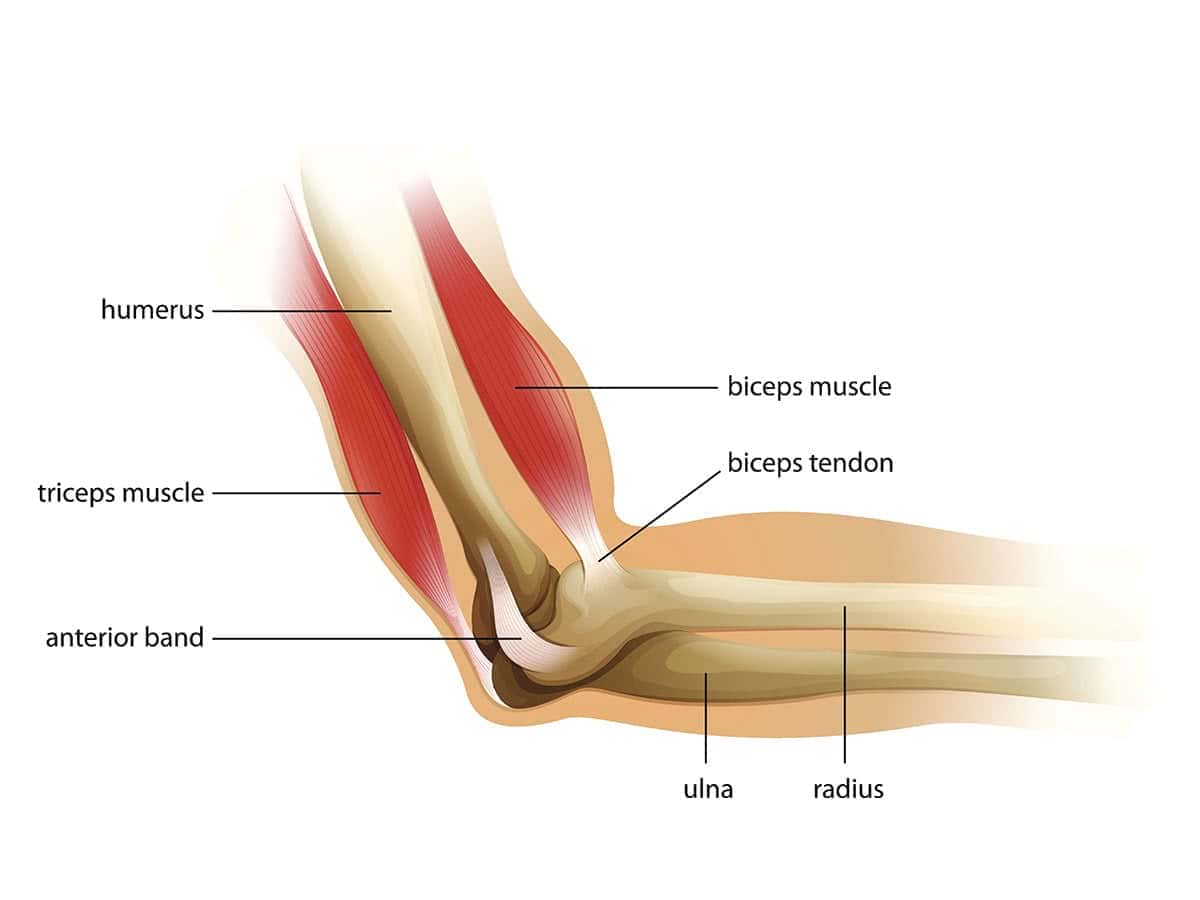The elbow joint connects the humerus (the bone in the upper arm) with the radius and ulna bones (in the forearm) which connect to the wrist. A combination of muscles and tendons connect to these bones and allow the forearm to flex, extend and rotate.

Problems can arise in the elbow where there is trauma to the elbow, or where ongoing conditions or overuse make using the elbow painful and/or reduce movement.
The most common conditions to affect the elbow are:
Biceps tendon rupture at the elbow
This is where a complete tear (or 'rupture') occurs at the junction (or ‘insertion point’) of the biceps tendon and forearm bone (the radius) at the elbow and is also know as a distal biceps tendon rupture.
Read more about biceps tears at the elbow
Elbow fracture
Elbow fracture occurs where one of the bones in the elbow joint breaks. Fracture of one or more of the bones of the elbow is relatively rare in adults but more common in younger children.
Read more about elbow fracture
Elbow dislocation
The elbow joint is one of the more common types of joint dislocation, especially in children and young adults.
Read more about elbow dislocation
Elbow instability
Instability of the elbow refers to where ligament damage around the elbow makes the joint feel unstable and may cause dislocation.
Read more about elbow instability
Elbow arthritis
Arthritis can affect any joint in the body, including the elbow joint. Even though the elbow joint is generally less affected by the condition than other joints, it can nonetheless be very painful.
Read more about elbow arthritis
Tennis elbow
Tennis elbow is a condition affecting the elbow caused by overuse, suffered by a wide range of people, not just tennis players.
Golfer's elbow
Perhaps not as well-known as its 'companion' condition – tennis elbow – golfer's elbow is another condition generally caused by overuse and can cause ongoing pain and weakness in the affected arm.

